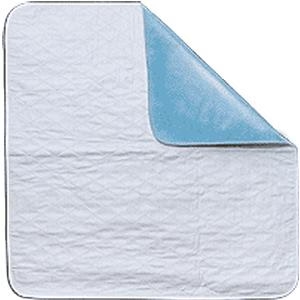
Looking for the best wheelchair cushion? The Cardinal Health Essentials Reusable Wheelchair Pad offers superior comfort and support. Featuring a non-slip backing and waterproof PVC, it’s perfect for everyday use. Discover the difference in quality today and buy now!
Introducing the Cardinal Health Essentials Reusable Wheelchair Pad – the ideal solution for enhancing wheelchair comfort and support. This 18″x18″ cushion features a non-slip backing and waterproof PVC, making it perfect for everyday use. Designed for durability and ease of cleaning, it ensures long-lasting comfort and protection. Whether for personal use or caregiving, this wheelchair pad meets the highest standards of quality and reliability, making it the best choice for those seeking superior wheelchair accessories.
Discover more here: Best Wheelchair Cushion
Which Wheelchair Cushion is Best?
The best wheelchair cushion depends on individual needs, including comfort, support, and pressure relief. Popular options include foam, gel, and air cushions. Foam cushions offer good initial comfort and are lightweight. Gel cushions provide better pressure distribution and cooling. Air cushions, like the ROHO, are excellent for pressure relief and adjustability. Consulting a professional can help determine the best choice for your specific needs.
How Thick Should a Wheelchair Cushion Be?
Wheelchair cushion thickness typically ranges from 2 to 4 inches. The ideal thickness depends on the user’s weight, seating stability, and the need for pressure relief. Thicker cushions generally offer more comfort and pressure distribution, while thinner cushions may provide better stability and positioning. Personal preference and specific medical needs should guide the selection.
Is an Air Cushion Better Than a Gel Cushion for Wheelchairs?
Air cushions and gel cushions each have their advantages. Air cushions, like the ROHO, offer superior pressure relief and adjustability, making them ideal for preventing pressure sores. Gel cushions, such as the Jay J2, provide excellent pressure distribution and cooling, reducing heat buildup. The choice between air and gel cushions depends on individual comfort, mobility, and medical requirements.
How Can I Make My Wheelchair Seat More Comfortable?
To make your wheelchair seat more comfortable, consider the following tips:
- Choose the Right Cushion: Select a cushion that provides proper support and pressure relief, such as foam, gel, or air cushions.
- Adjust Seating Position: Ensure proper posture by adjusting the seat height, backrest, and footrests.
- Use a Back Support: Add lumbar or full back support to improve posture and reduce back pain.
- Regular Maintenance: Keep the wheelchair clean and in good condition, and replace worn-out parts promptly.
- Custom Fitting: Consult a healthcare professional for a customized seating solution tailored to your specific needs.
These adjustments can significantly enhance comfort and prevent discomfort or injury.
Choosing between an air cushion and a gel cushion for a wheelchair depends on several factors, including comfort, pressure relief, maintenance, and individual preferences. Let’s delve into each aspect to help you make an informed decision:
Air Cushion vs. Gel Cushion:
1. Comfort:
- Air Cushion: Typically provides adjustable firmness and better airflow, reducing heat buildup. It can conform well to the user’s shape, offering good comfort.
- Gel Cushion: Offers stable support with a slightly firmer feel. It distributes pressure evenly and tends to provide a consistent cushioning effect.
2. Pressure Relief:
- Air Cushion: Adjustability allows for customization of pressure relief. Proper inflation levels can help in redistributing pressure effectively, which is crucial for preventing pressure sores.
- Gel Cushion: Offers excellent pressure redistribution due to its ability to conform to the user’s shape and distribute weight evenly.
3. Maintenance:
- Air Cushion: Requires occasional checking and adjustment of air pressure to maintain optimal support. They may need to be replaced more frequently if they develop leaks.
- Gel Cushion: Generally requires minimal maintenance beyond regular cleaning. Gel cushions are durable but may be heavier than air cushions.
4. Durability:
- Air Cushion: Depending on quality and usage, they can be prone to punctures or leaks over time, necessitating replacement.
- Gel Cushion: Typically more durable and less prone to damage from punctures. They can last longer with proper care.
5. Cost:
- Air Cushion: Often more affordable initially, but ongoing costs may be higher due to maintenance and replacement needs.
- Gel Cushion: Usually more expensive upfront but may offer better long-term value due to durability and minimal maintenance.
How Thick Should a Wheelchair Cushion Be?
The thickness of a wheelchair cushion primarily affects comfort and pressure relief. A cushion that is too thin may not provide adequate support, leading to discomfort and increased risk of pressure sores. On the other hand, excessively thick cushions may elevate the user too much, affecting stability and maneuverability. Here are some general guidelines:
- Standard Thickness: Most wheelchair cushions range from 1 to 4 inches in thickness.
- Comfort vs. Stability: Thicker cushions (around 2 to 3 inches) generally provide better comfort and pressure relief. However, for users who require more stability or have specific positioning needs, slightly thinner cushions may be preferable.
Should Cushions Be Used in a Wheelchair?
Using cushions in wheelchairs is highly recommended for several reasons:
- Pressure Relief: Cushions help distribute weight and reduce pressure points, which is crucial for preventing pressure sores, especially for individuals who spend extended periods in a wheelchair.
- Comfort: A well-chosen cushion improves overall comfort, reducing the risk of pain or discomfort during prolonged sitting.
- Posture Support: Some cushions offer ergonomic support, helping to maintain proper posture and spinal alignment.
- Hygiene: Cushions can be covered with washable, breathable materials, which are easier to clean and maintain hygiene.
In conclusion, the choice between an air cushion and a gel cushion depends on factors like comfort preferences, pressure relief needs, maintenance considerations, and budget. The thickness of a wheelchair cushion should strike a balance between comfort and stability, tailored to the user’s specific requirements. Using cushions in wheelchairs is essential for enhancing comfort, preventing pressure sores, and promoting overall well-being.
